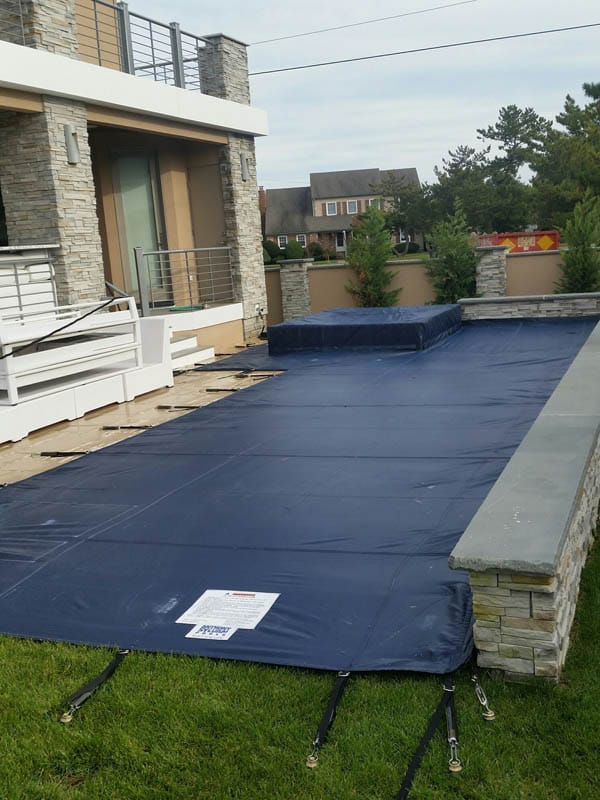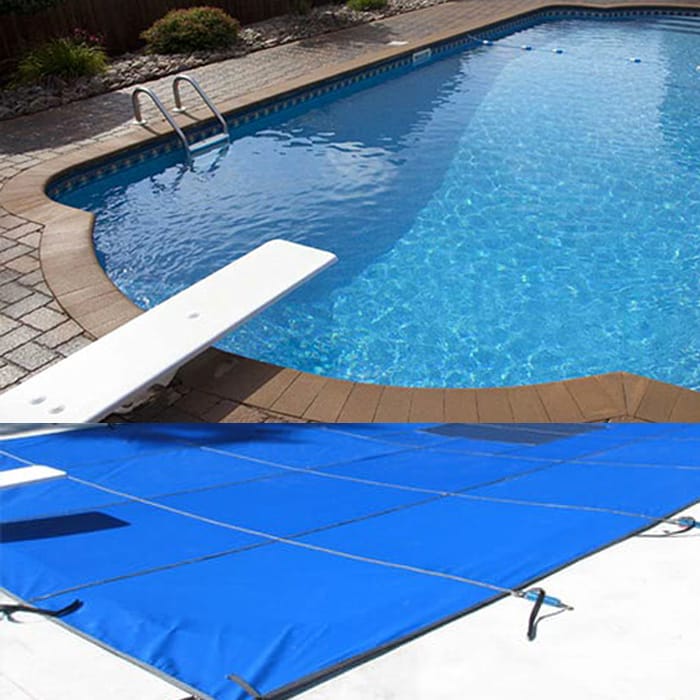Pools with Cover for Boosted Safety and Sanitation
Wiki Article
Discover the most effective Sort Of Pool Cover for Your Certain Swimming Pool Demands and Climate Problems
Picking the proper swimming pool cover requires a thorough understanding of the various options readily available and how they align with your special needs and ecological conditions. Variables such as security, energy effectiveness, and resilience are extremely important, as are considerations concerning your regional climate, which can considerably affect the cover's performance and longevity.Understanding Swimming Pool Cover Types
When picking a pool cover, it is important to recognize the different kinds offered, as each serves distinct purposes and provides unique advantages. The key groups of pool covers include safety covers, winter months covers, and solar covers.Safety and security covers are designed to support weight, making them perfect for homes with youngsters or animals. These strong alternatives can be made from mesh or solid materials, providing peace of mind while maintaining particles out of the swimming pool.
Winter months covers, as the name recommends, are mostly made use of to protect pools during chillier months. They protect against leaves, snow, and various other debris from entering the water, minimizing upkeep efforts when reopening the swimming pool in springtime. These covers can be made from long lasting materials that stand up to rough winter months problems.
Solar covers are an energy-efficient choice, designed to harness sunlight to warm up the pool water. They likewise minimize dissipation, helping to conserve water and lower heating costs.
Each type of pool cover plays a considerable function in preserving the sanitation, security, and effectiveness of your pool. Understanding these choices is critical for making an informed choice tailored to your particular requirements.
Variables to Consider
Choosing the appropriate pool cover entails careful factor to consider of a number of aspects tailored to your particular scenario. Primarily, assess the shape and dimension of your swimming pool. Covers can be found in various dimensions and designs, so guarantee compatibility with your pool's unique characteristics.
Next, take into consideration the primary function of the cover. Is it to enhance safety and security, preserve warmth, minimize debris, or reduce dissipation? Safety covers are crucial for families with youngsters or family pets, while solar covers can considerably enhance water temperature level.
Product resilience is an additional crucial aspect. Choices include mesh, solid, and solar materials, each offering distinctive advantages and long life. Assess upkeep needs, as some covers call for even more upkeep than others, influencing your total experience.
Budget is additionally an important consideration. Expenses vary widely based upon the kind, material, and attributes of the cover.
Lastly, installment ease must not be ignored (pools with cover). Some covers are DIY-friendly, while others might demand professional installment. By carefully considering these elements, you can select a swimming pool cover that best fits your needs and boosts your swimming pool experience
Environment Factors To Consider
Understanding climate considerations is vital when choosing a swimming pool cover, as ecological factors can significantly impact its performance. Regions with extreme weather need particular sorts of covers to guarantee optimum security and effectiveness. In areas with heavy snowfall or ice, a sturdy, solid cover is important to endure the weight and protect pool cover against water build-up. On the other hand, in warmer environments, a mesh cover may be suitable, enabling rainwater to drain while offering color and minimizing dissipation.Moisture degrees also play a crucial role in cover selection. In damp regions, covers that promote air movement are valuable to minimize algae growth and maintain water quality. Furthermore, UV exposure is a crucial aspect; covers that deal UV security can lengthen the life of both the cover and the pool's surface.
Wind patterns ought to not be forgotten, as high winds can displace lighter covers. Selecting heavier or protected options in windy areas can protect against damage and make certain the cover remains in location. By very carefully assessing these climate-related aspects, pool proprietors can choose a cover that enhances both functionality and longevity, ultimately securing their financial investment against the elements.
Benefits of Each Cover
A selection of pool covers offer distinctive advantages customized to certain demands and environmental conditions. Each sort of cover offers a special function, enhancing security, energy effectiveness, and upkeep convenience.Safety covers, usually made from solid products, supply a durable obstacle against accidental falls, making them perfect for homes with youngsters or pet dogs. They also help minimize particles build-up, maintaining swimming pools cleaner.
Mesh covers, while allowing rain to drain with, significantly reduce debris and are light-weight for very easy handling. They are best for environments with moderate rainfall, supplying an equilibrium in between safety and convenience.
Solar covers, created to harness sunlight, effectively prolong the swimming season by heating the water. These covers also lower dissipation, thereby saving water and lowering home heating costs.
Automatic security covers combine the benefits of safety and ease, giving seamless operation with a straightforward push of a button. They supply exceptional protection while minimizing hands-on handling.

Maintenance Tips for Swimming Pool Covers
Correct maintenance of swimming pool covers is vital to guarantee their durability and efficiency. Normal cleaning is critical; particles such as fallen leaves, dirt, and algae can accumulate and cause damage. Utilize a soft brush or leaf blower to gently remove particles, taking care not to harm the cover material.Examine the cover for any kind of signs of wear, such as tears or fraying joints. Resolving these concerns quickly can protect against additional damages and expensive repair work. For plastic and mesh covers, take into consideration using a safety therapy to boost their longevity and water resistance.

Verdict
To conclude, choosing the suitable swimming pool cover requires a detailed assessment of numerous variables, including safety and security, power effectiveness, and product longevity. Recognizing the distinctive types of swimming pool covers readily available and their corresponding advantages is crucial for resolving particular pool requirements. In addition, consideration of local environment conditions can considerably influence the performance and longevity of the selected cover. Appropriate upkeep practices better boost the capability and resilience of swimming pool covers, ensuring ideal defense for the pool throughout the year.Report this wiki page